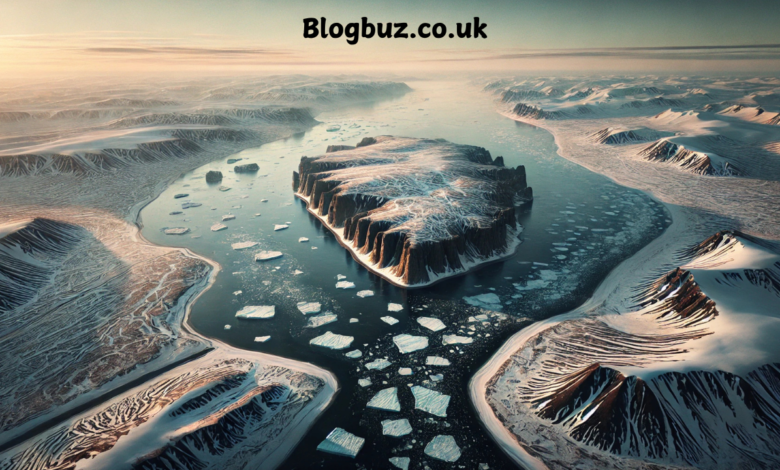The location is 65.476721-173.511416.-1125: A Hidden Arctic Mystery

The world is full of fascinating, remote locations, many of which remain largely undiscovered and untouched by human activity. At coordinates 65.476721° N and 173.511416° W, one such place lies deep in the Arctic, near the Bering Strait and close to Russia’s Chukchi Sea. This remote point, while hard to reach, holds natural beauty and secrets that captivate explorers and enthusiasts alike. But what makes this location so unique? Let’s dive into the mystery of 65.476721-173.511416.-1125, its features, significance, and the surrounding Arctic environment.
Geographic Overview of the Location
Located in the Chukchi Sea, north of the Bering Strait, this set of coordinates points to a place of natural wonder and biological richness. Situated in the Chukotka Autonomous Okrug in Russia, the region is known for its harsh Arctic climate, extreme seasonal variations, and unique ecological conditions.
The Arctic Environment
The Arctic, where this location lies, is characterized by long winters, short summers, and extreme cold. The average temperature during winter can plummet to below -30°C, while summers offer a brief respite, with temperatures barely reaching 10°C. This climate supports unique adaptations in the region’s flora and fauna.
Natural Attractions: A Geological Mystery
One of the most intriguing aspects of 65.476721-173.511416.-1125 is a natural land formation observed from satellite images. When viewed from above, this formation has been compared to a monkey’s face, creating intrigue among explorers and Google Earth enthusiasts. Such formations can occur due to natural erosion, glacial activity, or other geological processes.
- Satellite Images and Interest: The availability of satellite imagery has made it possible to study remote areas like this without physically being there. These images have captured the public’s attention, often finding their way into lists of fascinating places on Earth.
- Formation Significance: Such geological shapes serve as a point of curiosity and offer insight into the region’s erosion and sedimentation patterns over thousands of years.
Marine Biodiversity and Wildlife
The Chukchi Sea, surrounding these coordinates, is a hotspot for marine biodiversity. This region hosts a variety of species adapted to the cold, nutrient-rich waters, which support marine mammals, seabirds, and fish.
- Whale Species: The Chukchi Sea is home to different species of whales, including bowhead, grey, and beluga whales. These whales migrate through the region, feeding on the abundant krill and plankton.
- Seals and Walruses: Arctic seals are often spotted in this area, including the ringed and bearded seals. Sea ice is essential to their ability to procreate and relax. Walruses also inhabit this region, using the ice as a platform to hunt for clams and other marine invertebrates.
- Seabirds: Numerous species, such as puffins and murres, thrive in the region. These birds depend on the productive waters of the Chukchi Sea to sustain their breeding colonies.
Indigenous Significance and Subsistence
The Arctic region is more than a wilderness; it is also home to indigenous communities who rely on the sea’s resources. Near this area, indigenous peoples such as the Chukchi have a deep-rooted cultural connection to the land and sea.
- Hunting and Fishing Traditions: Indigenous communities often depend on walrus, seals, and fish for sustenance. These practices are sustainable, and part of the cultural heritage passed down through generations.
- Cultural Significance: The Arctic landscape is woven into the mythology and traditions of indigenous communities, who consider specific locations and natural formations spiritually significant.
Climate Change Impacts on the Region
One must discuss Arctic locations by addressing climate change’s effects on these delicate ecosystems. Nearly twice as much warming is occurring in the Arctic as in the rest of the world, leading to a series of environmental changes that directly impact the area around 65.476721-173.511416.-1125.
- Melting Sea Ice: As temperatures rise, the extent and thickness of sea ice have been diminishing. This reduction in sea ice disrupts the habitat of polar bears, seals, and other Arctic wildlife.
- Increased Human Access: Reduced ice cover opens previously inaccessible areas to shipping and oil exploration. This increased human activity could disturb the delicate ecosystem, making conservation efforts essential.
- Rising Sea Levels: Global sea levels are rising due to glaciers and ice caps melting, which could impact coastal regions worldwide.
Conservation Efforts and Challenges
The remote nature of this location makes conservation efforts challenging but possible. Protecting Arctic habitats and marine biodiversity is crucial for maintaining the planet’s ecological balance.
- Marine Protected Areas: Some parts of the Chukchi Sea have been designated as Marine Protected Areas (MPAs) to preserve the delicate Arctic ecosystem. These areas restrict certain activities like drilling, fishing, and shipping.
- International Cooperation: Given the shared nature of Arctic resources, countries like Russia, the United States, and Canada have initiated cooperative efforts to monitor and protect these environments. Research initiatives are often supported to study the effects of climate change on Arctic biodiversity.
The Appeal of Remote Exploration
For adventure enthusiasts, the allure of a remote location like 65.476721-173.511416.-1125 lies in its isolation and the mystery surrounding it. Although reaching such a place physically is challenging due to the extreme climate, technology now allows us to explore it virtually. Google Earth, satellite images, and other mapping services have made it possible to observe and appreciate these secluded spots worldwide.
Visiting and Exploration Challenges
Physical exploration of this location remains challenging due to extreme weather and lack of accessibility.
- Logistics and Safety: Extreme temperatures, unpredictable weather, and lack of infrastructure make it almost impossible for casual explorers to visit.
- Specialized Expeditions: Only specialized scientific expeditions with appropriate gear and expertise venture into such areas, often focusing on climate research or biodiversity studies.
Conclusion: The Enigma of 65.476721-173.511416.-1125
While 65.476721-173.511416.-1125 may not be a place most people will ever visit, its existence captures the imagination and highlights the beauty and mystery of our planet’s most isolated regions. From the unusual land formations visible through satellite images to the rich biodiversity of the Chukchi Sea, this location serves as a reminder of the importance of protecting and studying remote areas. As climate change and human activities increasingly threaten Arctic ecosystems, preserving such locations is vital. By raising awareness and fostering international cooperation, we can work towards a future where even the most isolated coordinates on Earth are respected and conserved.
FAQs about Location 65.476721-173.511416.-1125
Where is location 65.476721-173.511416.-1125?
This location is in the Chukchi Sea, north of the Bering Strait, near the coast of Chukotka Autonomous Okrug in Russia. It is a remote Arctic area with unique natural features.
What makes this location unique?
One of the main points of interest is a natural land formation visible from satellite images that resembles a monkey’s face, sparking curiosity and intrigue among explorers. Additionally, the area has a high level of marine life and is home to whales, walruses, and seals.
What is the climate like at 65.476721-173.511416.-1125?
The climate here is harsh and Arctic, with long, frigid winters when temperatures drop below -30 °C and short, mild summers barely reaching 10°C.
What wildlife can be found around this location?
The area supports a variety of Arctic species, including bowhead, grey, and beluga whales, ringed and bearded seals, walruses, and seabirds like puffins and murres.
Why is this location significant to indigenous communities?
Indigenous communities, particularly the Chukchi people, rely on the region’s marine resources for sustenance. Hunting and fishing traditions are central to their culture, and they have a deep-rooted connection to the land and sea.
You May Also Read: Something Shared by Wetlands and Woodwinds: A Symphony of Nature and Music




